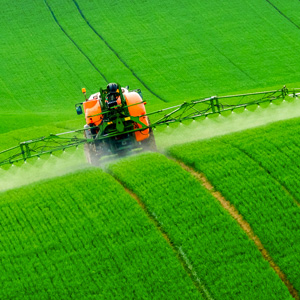/en/2017/ISOfocus_122/isofocus_122_Tractor.jpg/thumbnails/300) The May/June 2017 issue of ISOfocus examines how high-tech farming techniques and technologies can improve production output while minimizing cost and preserving resources. Among the experts interviewed are agricultural machinery companies, United Nations leaders and standards professionals from around the world, in fields ranging from climate-smart farming to sustainable cocoa and nutritious dairy production.
The May/June 2017 issue of ISOfocus examines how high-tech farming techniques and technologies can improve production output while minimizing cost and preserving resources. Among the experts interviewed are agricultural machinery companies, United Nations leaders and standards professionals from around the world, in fields ranging from climate-smart farming to sustainable cocoa and nutritious dairy production.
“The limit of the Green Revolution has been reached,” says Dr Francois Coallier, summing up the agricultural revolution of the 20th century. Involved in IT standardization for a number of years, he is now leading the group of experts responsible for IoT – the inter-networking of physical devices – within ISO/IEC JTC 1, the joint technical committee dealing with information technology. “We need to find ways to feed our growing world population in a sustainable way. One approach is to be more efficient in the use of resources (including people) in producing food, and also eliminate waste in the supply chain.”
The latest issue of ISOfocus showcases some of the opportunities that exist for smart farming by highlighting how the agricultural sector is most likely to benefit. It gives examples of how some companies are already leveraging this growing market, taking advantage of modern technologies so that waste is limited, productivity is maximized and the environment is affected as little as possible.
Smart farming’ techniques combined with other emerging ones, including IoT-enabled intelligent farm equipment, the use of drones and drip water irrigation, are clearly set to revolutionize agriculture. Find out about these latest topics – and how standards can help – in this ISOfocus issue.
ISO’s members are also tapping into this potential. As Charles Ongwae, Managing Director of the Kenya Bureau of Standards (KEBS), writes in his introductory remark: “In an effort to balance the beneficial role of state-of-the-art technologies with the potential costs to farmers, consumers and the environment, standards for the agricultural sector are needed. These standards provide best-practice guidelines for new technology, machinery and the related processes across the supply chain, as well as the path towards sustainable agriculture.”
So what will farming look like in 2050? One thing is certain, feeding 9.6 billion people successfully will demand an enduring focus on driving standards development, to ensure that the strides we are making with technology continue to deliver the productivity and environmental benefits we would like to see over the next couple of decades. Make no mistake, the future of farming is smart and it will feed tomorrow’s world.
Read the latest ISOfocus to learn more.

